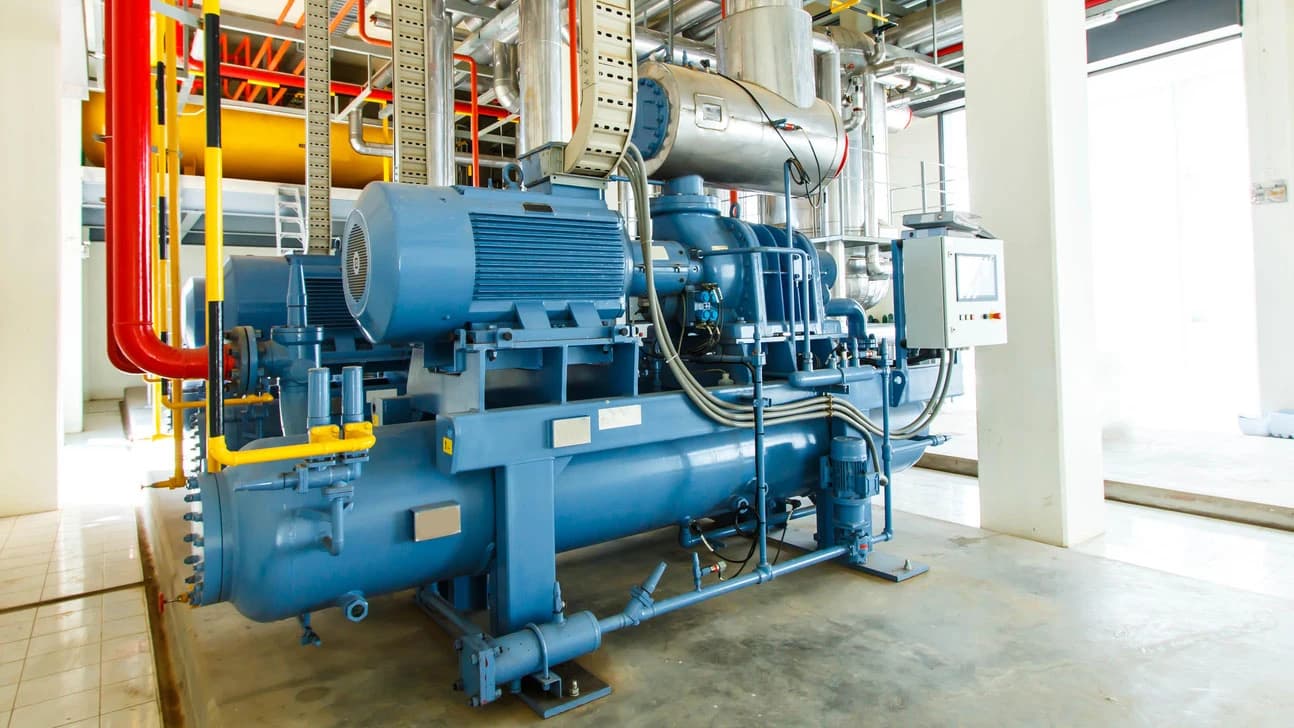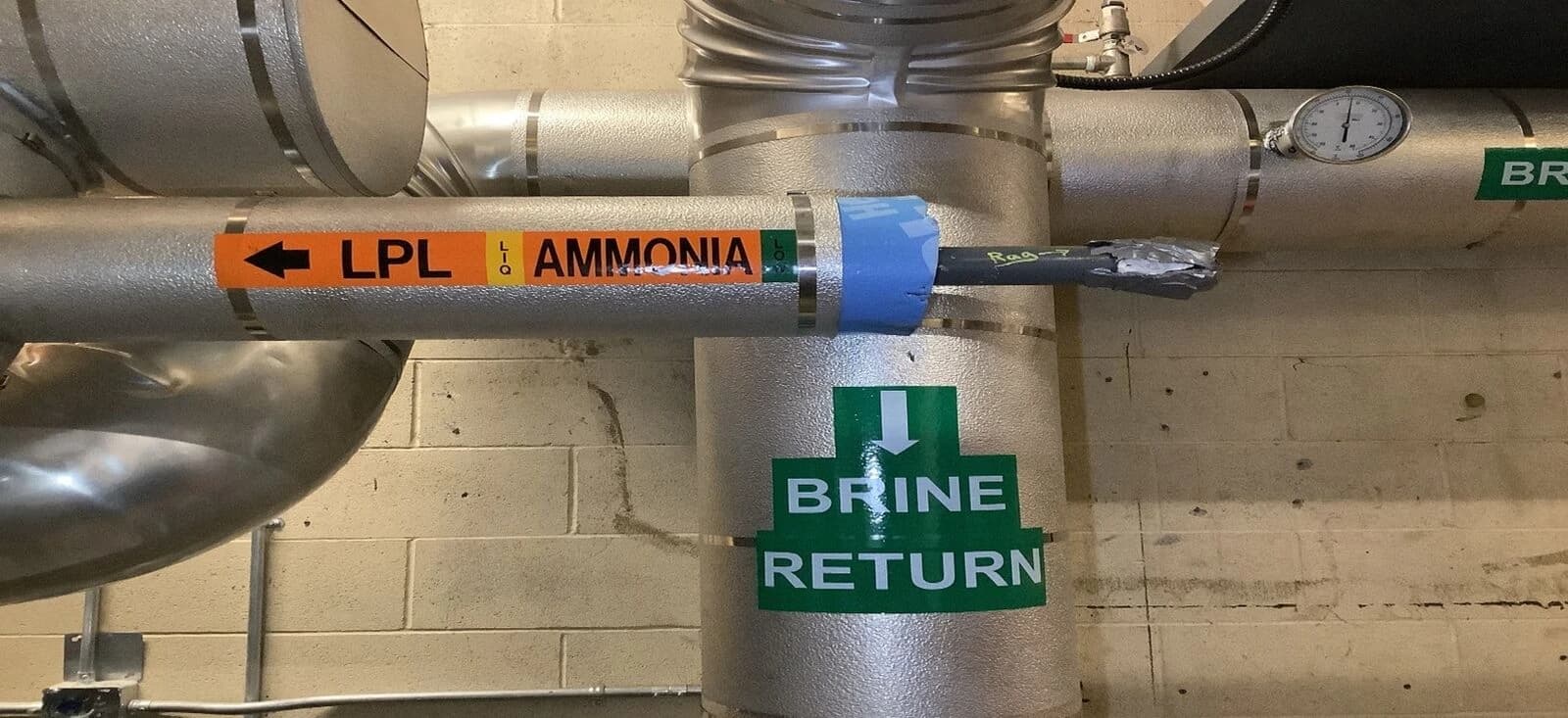Ammonia
Annual State of Safety 2024
Ammonia Release: Still a Top Safety Risk in BC
Every day, workers across the province clock in to work at cold processing plants, ice rinks, recreation centres, and warehouses in the agriculture and food industries.
Many facilities like these use pressurized ammonia for cooling thanks to ammonia’s excellent thermodynamic properties, which allows it to quickly absorb heat and cool efficiently. Its wide operating range, low environmental impact, and relatively low operational costs make ammonia a popular and safe choice when handled properly.
But when improperly handled, ammonia can pose a deadly safety risk. Ammonia can be corrosive to the skin, eyes, and lungs upon contact, and ammonia releases can quickly turn fatal. When ammonia is released and depressurizes, it rapidly expands from a liquid to a gas, which means it spreads extremely quickly and can put entire communities at risk.
In 2024, ammonia release once again appears among the top 5 safety risks from regulated technologies in BC. These rankings are based on the likelihood of an incident taking place, as well as the severity of consequences such as injury or damage following an incident.
History of Severe Ammonia Incidents in BC
In recent years, we’ve investigated a number of devastating ammonia-related incidents, two of which resulted in multiple deaths.
In 2017, there was an ammonia release at the Fernie Memorial Arena which caused three fatalities, as well as the evacuation of 95 residents from 55 nearby homes.
A similar incident occurred at a meat processing plant in Langley, BC, when a ruptured heat exchanger released an estimated 485 to 1,500 lbs of ammonia from the refrigeration system, which resulted in an extensive area evacuation for two days.
In 2023, another fatal ammonia release occurred, this time at an ice-making facility in Kamloops, BC. This release caused multiple exposures, including one fatality, an evacuation, and the temporary shutdown of nearby businesses.

Poor Communication Leads to an Ammonia Release in North Vancouver
In April 2024, an incident occurred at a public athletic club in North Vancouver which resulted in the release of up to 100 pounds of ammonia into the atmosphere outdoors. What would have been a routine replacement service led to an ammonia release due to poor communication between workers.
On the day of the incident, a contractor held a pre-job meeting in the morning to discuss the day's work and potential hazards. A refrigeration mechanic apprentice arrived at the site over two hours late and missed vital information about the risks and potential hazards.
After the apprentice showed up late, the job foreman, who is a certified refrigeration mechanic, instructed the apprentice to cut some welds on the condenser. However, the ammonia vapor lines connected to the condenser still contained ammonia and had not yet been isolated, evacuated or purged with nitrogen in preparation for the removal. The details of the job were not effectively communicated from the foreman to the apprentice, and when the apprentice went to the condenser with the grinder, he observed black felt marker lines on the ammonia piping and thought they were the marks on the welds that the foreman had instructed him to cut.
A refrigeration mechanic apprentice arrived at the site over two hours late and missed vital information about the risks and potential hazards.
The apprentice proceeded without direct supervision from the qualified site foreman and began to cut into the live ammonia vapor line with the grinder. Once he had cut into the pipe, ammonia began to escape. The foreman was informed of the leak by the apprentice and the piping was isolated by closing shutoff valves.
The facility enacted their Ammonia Leak Emergency Protocol, and the immediate area was cordoned off. The facility, neighboring businesses, a school, and a daycare were alerted until the leak stopped approximately one hour later.
One bystander experienced symptoms of ammonia exposure and was treated at the scene by emergency response personnel.
Industry Education and Outreach
In 2024, we revised or released nine different regulatory notices to the wider boiler, pressure vessel, and refrigeration industry to communicate important safety information including the following:
- licensing requirements;
- certification and registration requirements;
- decommissioning requirements and safety guidelines;
- notification and declaration of compliance requirements; and
- multiple information bulletins related to the design and construction of refrigeration systems.
Additionally, via an email campaign, we informed our clients and partners in the refrigeration industry about the code changes that came into effect in January 2025, which help address some of the safety hazards posed by ammonia in the incidents above. The purpose of these industry outreach efforts is to share incident investigation reports, safety directives, and important policy updates related to the safe operation of ammonia refrigeration systems.


Looking Ahead: Our Commitment to Ammonia Safety
An ammonia release can be catastrophic, and even a small exposure to ammonia can still cause serious injuries.
As we've learned through our incident investigations, there are many complex factors that may contribute to an incident, including:
- poor communication between those working on the equipment;
- improper documentation of work;
- lack of prioritizing equipment maintenance
- not funding equipment upgrades; and
- decisions made by workers, owners, and operators.
To help develop effective measures to reduce the risk of ammonia releases, we plan to conduct a comprehensive risk analysis in 2025 that draws upon historical ammonia incident data, as well as expert knowledge from the industry. The analysis will aim to identify predominant ways in which ammonia release occurs in BC, describing not only how ammonia leaks occur, but also which regions and what population groups are more exposed, and what kind of vulnerability factors are at play.
In 2025 and beyond, we will continue to keep tracking ammonia-related incidents to further our risk analysis, and work with our safety partners in the refrigeration industry to mitigate hazards that may put British Columbians at risk.
You Might Be Interested In
Building Confidence
Learn about our risks in focus. See how we’re improving the client experience and enforcing against those who work outside of the safety system.
Learn MoreTop 5 Safety Risks
From carbon monoxide to electrical shock and fire, learn about the Top 5 Safety Risks we identified for 2024.
Learn MoreSafety Engagement
We provide technical training and education to support our partners. We also work to influence people in the safety system to make safety-minded decisions.
Learn More